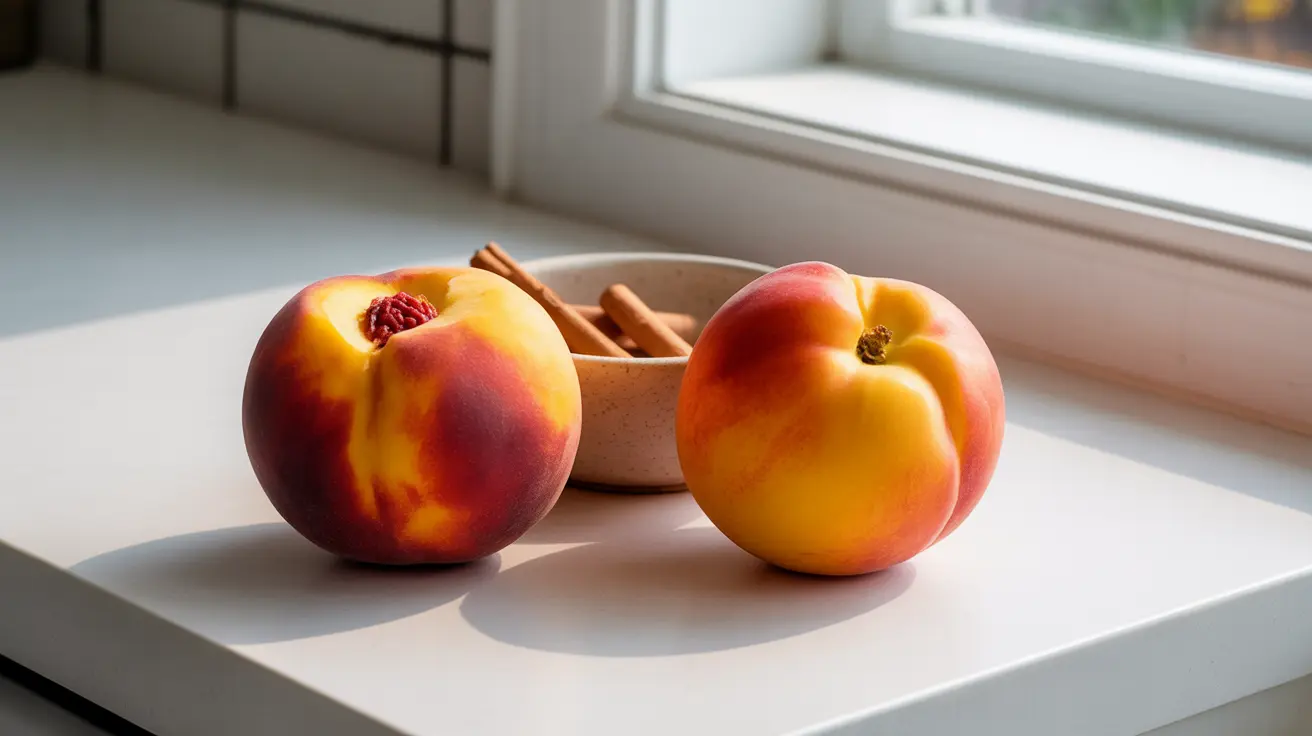When browsing the produce aisle, you might find yourself wondering about the differences between nectarines and peaches. While these stone fruits share a common ancestry, they have distinct characteristics that affect their nutritional value, culinary uses, and overall appeal.
Understanding the unique qualities of each fruit can help you make informed choices for your dietary needs and cooking preferences. Let's explore the key differences between these popular summer fruits.
Physical Characteristics and Texture
The most noticeable difference between nectarines and peaches lies in their skin texture. Peaches feature a fuzzy exterior, while nectarines have smooth, glossy skin. This distinction is due to a single genetic variation, as nectarines are actually a mutation of peaches.
Beyond the skin, nectarines typically have firmer flesh and a more intense, sweet-tart flavor profile. Peaches tend to be softer and juicier, with a more delicate sweetness that many find appealing.
Nutritional Profile Comparison
Both fruits offer impressive nutritional benefits while being naturally low in calories. A medium-sized nectarine or peach contains approximately 60 calories and provides essential vitamins and minerals.
Vitamin Content
- Vitamin C for immune support
- Vitamin A for eye health
- Vitamin E for antioxidant protection
- B-complex vitamins for energy metabolism
Mineral Content
- Potassium for heart health
- Magnesium for bone strength
- Copper for collagen production
- Zinc for immune function
Sugar Content and Glycemic Impact
Both nectarines and peaches have similar sugar content, with approximately 11-13 grams per medium-sized fruit. Their glycemic impact is moderate, making them suitable for most healthy eating plans when consumed in appropriate portions.
The fiber content in both fruits helps slow sugar absorption, making them reasonable choices for people monitoring their blood sugar levels. However, portion control remains important for those with diabetes or following low-sugar diets.
Culinary Applications and Cooking Properties
Both fruits excel in different culinary applications. Peaches are often preferred for:
- Baking pies and cobblers
- Making preserves and jams
- Grilling and caramelizing
- Creating smooth purees
Nectarines are particularly well-suited for:
- Fresh eating and fruit salads
- Poaching and sauce-making
- Adding to savory dishes
- Garnishing desserts
Storage and Ripening
Both fruits continue to ripen after harvesting. Store them at room temperature until ripe, then refrigerate to extend their life. Nectarines generally have a slightly longer shelf life due to their firmer flesh and smooth skin, which is less prone to bruising.
Frequently Asked Questions
What are the main differences between nectarines and peaches in terms of nutrition and texture?
While nutritionally similar, nectarines have smooth skin and firmer flesh, while peaches have fuzzy skin and softer, juicier flesh. Both fruits provide comparable amounts of vitamins, minerals, and fiber.
Are nectarines or peaches better for people managing their sugar intake?
Both fruits have similar sugar content and glycemic impact. Neither is significantly better for sugar management, but both can be included in a balanced diet due to their fiber content and moderate portion sizes.
How do the health benefits of eating nectarines compare to those of peaches?
Nectarines and peaches offer virtually identical health benefits, providing similar amounts of antioxidants, vitamins, and minerals that support immune function, skin health, and overall wellness.
Which fruit is better suited for cooking or baking: nectarines or peaches?
Peaches are traditionally preferred for baking due to their softer texture and tendency to break down well during cooking. However, nectarines can be excellent in both cooked and raw applications, particularly in situations where their firmer texture is desired.
Do nectarines and peaches provide different types of vitamins and minerals?
No, nectarines and peaches provide the same types of vitamins and minerals in very similar amounts. Both are good sources of vitamins A, C, and E, as well as potassium and other essential minerals.




